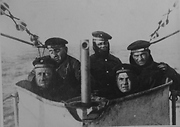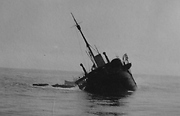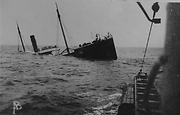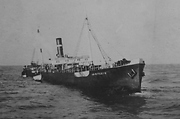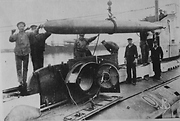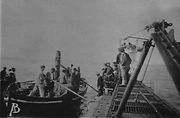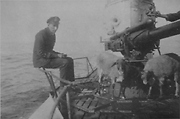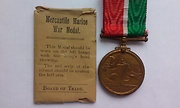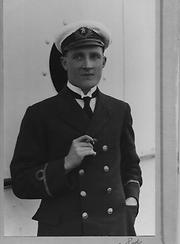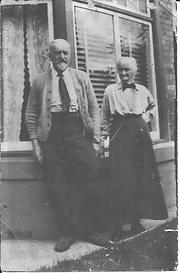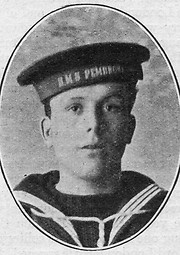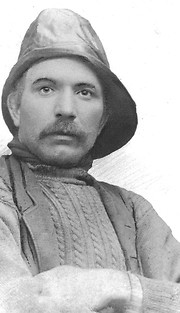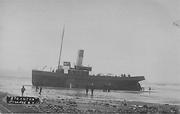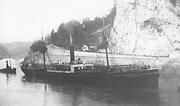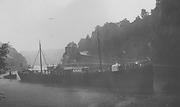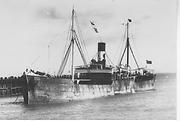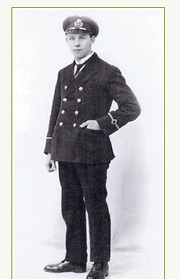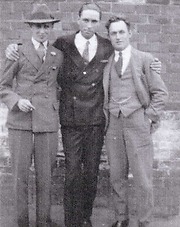 Hartlepool Sports & Leisure
Hartlepool Sports & Leisure
- Cinemas, Theatres & Dance Halls
- Musicians & Bands
- At the Seaside
- Parks & Gardens
- Caravans & Camping
- Sport
 Hartlepool Transport
Hartlepool Transport
- Airfields & Aircraft
- Railways
- Buses & Commercial Vehicles
- Cars & Motorbikes
- The Ferry
- Horse drawn vehicles
 A Potted History Of Hartlepool
A Potted History Of Hartlepool
- Unidentified images
- Sources of information
- Archaeology & Ancient History
- Local Government
- Printed Notices & Papers
- Aerial Photographs
- Events, Visitors & VIPs
 Hartlepool Trade & Industry
Hartlepool Trade & Industry
- Trade Fairs
- Local businesses
- Iron & Steel
- Shops & Shopping
- Fishing industry
- Farming & Rural Landscape
- Pubs, Clubs & Hotels
 Hartlepool Health & Education
Hartlepool Health & Education
- Schools & Colleges
- Hospitals & Workhouses
- Public Health & Utilities
- Ambulance Service
- Police Services
- Fire Services
 Hartlepool People
Hartlepool People
 Hartlepool Places
Hartlepool Places
 Hartlepool at War
Hartlepool at War
 Hartlepool Ships & Shipping
Hartlepool Ships & Shipping

Heroism and Heartbreak - Talking Histories
Details about Heroism And Heartbreak - Talking Histories
Created through the 'Heroism & Hearbreak: True Tales from the Hartlepools at War' Project, these "Talking Histories" tell the often forgotten stories of the Hartlepools' Merchant Seamen and Fishermen who lost their lives during the First World War.
The 'Heroism & Heartbreak' Project - At the outbreak of war, the Hartlepools were major North-East ports, home to a number of well-known shipping companies and thriving shipbuilding and fishing industries. Almost every family in the town had links with the sea, with many having relatives serving in the Merchant Navy and local fishing fleets. Within this close-knit community the loss of every local ship and crewman deeply affected a great many people.
As the war progressed, German U-boats and mines took a huge toll of allied shipping, eventually sinking over 2,500 British merchant ships and nearly 800 fishing vessels, with the loss of more than 17,000 lives. Of these, over 400 merchant ships had either been built or owned in the town and more than 260 Hartlepool sailors lost their lives. Sailing on slow, un-armed and defenceless merchant ships, their actions were every bit as selfless and courageous as those fighting on the Western Front, yet their stories are all but forgotten or overlooked.
“Heroism and Heartbreak” aims to rediscover and retell these stories – but we need your help.
We would love to hear from anyone with a photograph, letter or diary from a family member who served in the Merchant Navy, Royal Navy or in the local Fishing Fleets during WW1. For more information please contact us by e-mail: (infodesk@hartlepool.gov.uk), telephone: 01429 242909, or by calling in to Hartlepool Central Library.
Location
Related items :
 Captured and Sunk - the Photographs
Captured and Sunk - the Photographs
The following photographs were all taken from an album (now in the possession of loacl ship enthusiast Mr. Martin Spaldin, and held at the Imperial war Museum), compiled by a German submariner who sailed on the UC-21, one of the most successful German submarines of the First World War.
More detail » Captured and Sunk - the Story
Captured and Sunk - the Story
The following information has been used as the basis of the "Heroism & Heartbreak - Captured and Sunk" talking history. The photographs used in this 'history', were all taken from an album compiled by a German submariner who sailed on the UC-21.
The UC-21 was one of the most successful German submarines of the First World War. From her first patrol in November 1916 until she went missing in September 1917, she sank no less than 98 ships totalling over 130,000 tons. Most of these successes were scored by her first commander, Reinhold Saltzwedel.
In the early part of the war, German U-boats would generally surface to attack enemy merchant ships which at this stage were largely un-armed. The ship’s crew would be given time to get into their lifeboats and pull away from the ship before it was sunk, either by gunfire or explosive charges laid by a boarding party. These boarding parties often took the opportunity to ‘requisition’ fresh food and other useful items before the ship went down.
This situation drastically changed on the first of February, 1917, when the German Government authorised a policy of Unrestricted Submarine warfare. This allowed its U-boat commanders to attack and sink – without warning – any ships carrying cargoes destined for Britain and her allies – including ships from neutral countries such as the United States. Not surprisingly, merchant shipping losses increased dramatically.
URIBITARTE – sunk on December 2nd, 1916
This 1,700 ton steamship was built in 1888 at the Raylton Dixon shipyard in Middlesbrough and launched as the Fulford. Her original owners, J.M. Lennard & Sons, sold her in 1899 to the Spanish Aznar & Co. based in Bilbao. Although she was a neutral ship, she was nevertheless stopped and sunk by UC-21 on the 2nd of December 1916, while on a voyage from Bilbao to Cardiff with a cargo of iron ore. There was no loss of life.
LONGSCAR – sunk on February 14th, 1917
The Longscar was a 2,700 ton steamship built at the William Gray shipyard in West Hartlepool in 1903 for Thomas W. Willis, a well-known West Hartlepool shipowner. On the 14th of February, 1917, on passage from Nantes to Bilbao in ballast, she was stopped and sunk by UC-21 off the west coast of France, fortunately with no casualties.
ILLINOIS – sunk on March 18th, 1917
At around 8 o’clock on the morning of Sunday, 18th of March, 1917, the UC-21 stopped the 5,000 ton American tanker Illinois while she was on passage, in ballast, from London to Port Arthur in Texas. This was an almost brand-new ship, having been launched just four years earlier from the Newport News Shipbuilding & Dry Dock Co. in Virginia, and owned by The Texas Company of New York, better known today as Texaco.
As America was still neutral at this time, her crew had painted a large American flag and their ship’s name and country of origin on the sides of the hull, but all to no avail.
Once the crew had safely abandoned ship, a German boarding party laid explosive charges, sending the Illinois to the bottom.
URNA – sunk on May 28th, 1917
The Urna was a 2,600 ton Norwegian steamship, originally built as the Carnmuir by Russell’s of Port Glasgow in 1903. Her original owners, the Dundee Steam Navigation Company sold her in 1911 to the Scandinavian Shipping Company Ltd. They in turn sold her, in 1913, to Swedish shipowner Otto Banck, who changed her name to Urna. She kept this name when she was sold to her final owners, the Aalesunds Shipping Company, in 1916.
She was stopped and sunk by UC-21 on May 28th, 1917, when some 10 miles off the north-east coast of Spain, on passage from the Moroccan port of Melilla to Barrow in Furness with a cargo of iron ore.
MARIE – Danish steel schooner sunk on December 6th, 1916
The Marie was a small Danish steel-hulled schooner built in 1903 on the Danish island of Bornholm. On December the 6th, 1916, on a voyage from Liverpool to Tonnay Charente in France with a cargo of pitch, she was stopped and sunk by UB-29, some 10 miles west of the Scilly Isles. There were no lives lost.
RUFUS – sunk by UB-37 on August 11th, 1916
Built in Norway in 1871 the Rufus was a small wooden brig, captured and sunk by UB-37 in the North Sea on the 11th of August, 1916. This 44 year-old ship was on a voyage from Norway to Sunderland with a cargo of pit-props when she was captured and sunk.
 Henry Warner Cook - the Photographs
Henry Warner Cook - the Photographs
The following photographs feature in the “Heroism & Heartbreak” Talking History ‘Henry Warner Cook’, compiled by Project Volunteer Frances Wilson, from information kindly received from members of the Cook family, and publicly accessible Census Records. If you have any further photographs and/or information about Henry Warner Cook or his family and would like to share it with us, then please contact us at infodesk@hartlepool.gov.uk
More detail » Matthew Hastings - HMS Char - the Photographs
Matthew Hastings - HMS Char - the Photographs
The photographs in this Gallery feature in the “Heroism & Heartbreak” talking history ‘Matthew Hastings – HMS Char’. They have been kindly shared with this project by Susan Scott, Chris Walker, the Sunderland Museum and Winter Gardens Collection, and Hartlepool Borough Council’s Library and Museums Services. If you have any further information about Matthew Hastings or HMS Char and would like to share it with us, then please contact us at infodesk@hartlepool.gov.uk
More detail » Of Ships and Men - Haslingden, Kalo, Snowdon Range - the Photographs
Of Ships and Men - Haslingden, Kalo, Snowdon Range - the Photographs
The photographs in this Gallery feature in the “Heroism & Heartbreak” talking history ‘Of Ships and Men – Haslingden, Kalo, Snowdon Range’. They have been kindly shared with this project by Mr. Harold Appleyard and Hartlepool Borough Council’s Library and Museums Services. If you have any further information about these ships or their crews and would like to share it with us, then please contact us at infodesk@hartlepool.gov.uk
More detail » Of Ships and Men - Haslingden, Kalo, Snowdon Range - the Story
Of Ships and Men - Haslingden, Kalo, Snowdon Range - the Story
The following information has been compiled by “Heroism & Heartbreak” Project Volunteers from a wide range of sources, including Lloyd’s Registers, the Miramar Ship Index (http://www.miramarshipindex.org.nz/), U-boat.net (http://www.uboat.net/), and the Commonwealth War Graves Commission’s Tower Hill Memorial records (http://www.cwgc.org/). If you have any further information about these ships or their crews and would like to share it with us, then please contact us at infodesk@hartlepool.gov.uk
Of Ships and Men – Haslingden, Kalo, Snowdon Range
On May the 12th, 1918, the small cargo steamer Haslingden was torpedoed and sunk by the German submarine UB-21, when some 7 miles off Seaham Harbour. Built at the William Gray shipyard in 1895, this 2,000 ton well-deck steamship was owned by F. Yeoman & Sons, of West Hartlepool, and was sailing empty from Rouen to the Tyne to load a cargo of coal. Eleven of the crew were lost: 28-year old, 2nd Engineer Edward Carroll who lived at No.17 Prissick Street, Hartlepool; John Lenney Bell; James Crawshaw; Robert Heugh; Cyril Reynolds Hunt; H. Johns; Harry Lyth; William Tucker; Thomas Walter Whitehurst; William Whitfield; William Thomas Wiles.
A month later another Gray-built ship was torpedoed and sunk, this time the small steamship Kalo. Built in 1903 as the Estonia for a Danish company, she was taken over by the British Government in 1917 and renamed. On June the 13th, 1918, while on a voyage from Newcastle to Pauillac in France with a cargo of coal, she was torpedoed off Flamborough Head by the German submarine UB-107.
Badly damaged and sinking, an armed trawler attempted to tow her towards the shore, but the Kalo quickly sank, going down in 100 feet of water. Three crewmen from the North-East were lost: Hartlepool-born 2nd Engineer James Mann, who lived with his wife Florence Louisa at No.4 Friar Street, Hartlepool; and Firemen/Trimmers James Leask (born at South Shields), and William Rutley (born at Sunderland).
The four and a half thousand ton steamship Snowdon Range was a locally owned vessel belonging to the Neptune Steam Navigation Company, and managed by Furness Withy. The ship had been built in 1903 by Scott’s Shipbuilding & Engineering Company on the River Clyde and originally named Dalhanna, before being sold and renamed in 1915.
On the 28th of March 1918, on a voyage from Philadelphia to Liverpool with general cargo and a consignment of explosives, she was torpedoed and sunk in the Irish Sea by the German submarine U-65. Four members of the crew were lost: 21-year old 4th Engineer James Arthur Bowman, the son of John William and Elizabeth Bowman, who lived at No.8, Whitburn Street, West Hartlepool; and Firemen/Trimmers Saiyed Husain, Richard Keegan, and Robert Barbour Prentice.
 Of Ships and Men - Horsa, Ribston, Waverley - the Story
Of Ships and Men - Horsa, Ribston, Waverley - the Story
The following information has been compiled by “Heroism & Heartbreak” Project Volunteers from a wide range of sources, including Lloyd’s Registers, the Miramar Ship Index (http://www.miramarshipindex.org.nz/), U-boat.net (http://www.uboat.net/), and the Commonwealth War Graves Commission’s Tower Hill Memorial records (http://www.cwgc.org/). If you have any further information about these ships or their crews and would like to share it with us, then please contact us at infodesk@hartlepool.gov.uk
Of Ships and Men – Horsa, Ribston, Waverley
On April the 30th, 1917, the Hartlepool steamship Horsa was torpedoed and sunk without warning by the German submarine U-93, some 200 miles off the south-west coast of Britain. This 3,000 ton steamer had been built at the William Gray shipyard in 1894 and was owned locally by Herskind & Company of West Hartlepool. At the time of her sinking she was sailing from Briera in Algeria, bound for Cardiff with a cargo of iron ore.
The attack on the ship was recorded by one of the U-boat’s crew:
“We had one torpedo left, and were nearly ready to turn homeward. It was sundown of a clear, balmy spring day. A big steamer came along, the British ship HORSA. With our last torpedo we scored a clean hit at the bow. She sank very quickly. Her stern rose into the air and she went down like an airplane in a nose dive.”
Eleven lives were lost, including two from the town: 54-year old Chief Engineer Alfred Nash, son of the late George Henry and Elizabeth Nash; husband of Mary Jane Nash (formerly Morrod), at No.7, Carlton Street, West Hartlepool; and sailor Charles Rushton, about whom there are few details other than he was born in Hartlepool.
The other crewmen who lost their lives were:
William Brodie, Leading Seaman (Royal Naval Reserve), aged 21, Avoch, Ross-shire;
James Casey, Chief Boatswain, 50, Church Bay Rd. Crosshaven;
James Casey, 3rd Engineer, 20, b. Crosshaven;
Arthur Elliott, Fireman, 30, Cardiff;
Walter Farrant, Engineer’s Steward, 17, Sydenham St, Barry Dock, Glamorgan;
J. Josephson, Donkeyman, 21, b. Russia;
Edward Knaggs Stonehouse, Master, 65, Whitby, Yorkshire;
M. Soares, Sailor, 39, b. Puerto Rico;
Peter John Tibbo, Sailor, 19, b. Harbour Breton, Newfoundland.
The survivors from the Horsa were taken aboard the submarine and transferred the next day to the lifeboats of a Swedish ship which had been captured and sunk by another U-boat, the U-21.
An even greater loss of life occurred when the steamship Ribston was torpedoed and sunk 90 miles off the south-west coast of Britain by U-45, on July the 16th, 1917. Like the Horsa, the Ribston was also built in 1894 at the William Gray shipyard, but for different owners, the London & Newcastle Steam Ship Company Ltd. By 1917 she had been sold to the Zodiac Shipping Company and was on a voyage from Melila in Spain, bound for Glasgow with a cargo of iron ore when she was sunk.
Twenty-five crewmen were lost, including the 1st Mate, Thomas Glennie, who lived with his wife Sarah Jane at No.14 Cundall Road, West Hartlepool.
The other crewmen who lost their lives were:
William Henry Atkinson, Messman, 28, b. Stockton-on-Tees, resided Hexthorpe, Doncaster;
William Jenkin Bartlett, Able Seaman, 20, Barry Island, Glamorgan;
Robert Burrows, Steward, 24, b. Birmingham, resided Cardiff;
B. Calson, Donkeyman, 49, b. London;
Zanis Constantine Coutsouis, Carpenter, 58, b. Chile, resided Teavis St., Barry;
Charles Crowden, Sailor, 23, b. Penarth;
George Mansel Durbin, Sailor, 18, Barry Dock, Glamorgan;
Benjamin Charles Evans, Fireman, 23, Merthyr St. Barry, Glamorgan;
William Hunter Jamieson, Able Seaman, 29, Shetland;
Joseph Kays, Fireman, 32, b. Bedminster, Bristol;
Francis Kemp, Able Seaman, 28, b. Wolverhampton;
James MacPherson, Leading Deckhand, 23, Kinlochberry, Lairg;
David Paterson MacRae, 1st Engineer, 50, b. Edinburgh, resided Newport, Monmouthshire;
George Madden, 2nd Mate, 22, b. Liverpool;
John Stewart, 3rd Engineer, 30, b. Corriecravie, Isle of Arran;
James Tatton, Deckhand;
George Henry Taylor, Able Seaman, 21, Barry, Glamorgan;
William Thomas, Fireman, 26, Cardiff;
J. Tweedie, Master;
John Owen Charles Vincent, Fireman, 28, b. Cardiff;
John Henry White, 2nd Engineer, 27, b. Liverpool, resided British Columbia, Canada;
Charles Stanley Wilson, Fireman, 24, Cardiff.
On December the 20th, 1917, the 4,000 ton steamship Waverley was torpedoed and sunk off the Algerian coast by the German submarine U-35. Owned by the local Pyman Steam Ship Company, she was on a voyage from Cardiff to Port Said with a cargo of coal, iron and railway wagons. She went down with the loss 22 crewmen, including 34-year old Chief Engineer George Herbert Todd, who lived with his wife Ada Isabel at No.44 Milton Street, West Hartlepool.
The other crewmen who lost their lives were:
Andrew Coleman, Fireman/Trimmer, 32, b. Cork;
William Devany, Cabin Boy, 17, b. Glasgow;
Daniel Patrick Gilmore, 2nd Engineer, 43, b. Belfast;
Ernest Green, Mess Room Steward, 16, Great Yarmouth;
Theophilus Hopkins, Fireman/Trimmer, 36, b. Newport;
Francis Kelly, Leading Seaman (Royal Naval Reserve);
M. Kinwigi, Fireman/Trimmer, 20, b. Finland;
Alfred Francis Lee, Chief Steward, 29, b. Liverpool;
Louis Mallia, Boatswain, 42, b. Malta, resided Constantinople;
William Nash, Fireman/Trimmer, 29, b. Newport;
Peter O’Donnell, Carpenter, 65, b. Cloghernamore, Co. Donegal;
P. Petas, Fireman/Trimmer, 23, b. Greece;
Joseph Charles Edward Racine, Ship’s Cook, 25, b. St Jean, Canada;
O.W. Raisanen, Fireman/Trimmer, 34, b. Finland;
George Allan Richmond, Galley Boy, 15, b. Wishart;
Guiseppe Said, Able Seaman, 45, Tarxien, Malta;
Cyril David Slater, Apprentice, 19, b. Newark;
William Smith, Donkeyman, 31, b. Birmingham;
C. Traynor, Fireman/Trimmer, 29, b. Belfast;
Laurence Sidney Webster, Wireless Operator, 17, b. Tottenham;
Alfred Clark White, 4th Engineer, 24, Mount Florida, Glasgow.
 Of Ships and men - Horsa, Ribston, Waverley - the Photographs
Of Ships and men - Horsa, Ribston, Waverley - the Photographs
The photographs in this Gallery feature in the “Heroism & Heartbreak” talking history ‘Of Ships and Men – Horsa, Ribston, Waverley’. They have been kindly shared with this project by Mr. Harold Appleyard and Mr. Martin Spaldin. If you have any further information about these ships or their crews and would like to share it with us, then please contact us at infodesk@hartlepool.gov.uk
More detail » Ralph Fergus - HMS Char - the Photographs
Ralph Fergus - HMS Char - the Photographs
The photographs in this Gallery feature in the “Heroism & Heartbreak” talking history ‘Ralph Fergus – HMS Char’. They have been kindly shared with this project by P. Janet Clark-Gardiner, Susan Scott and Gillian Smith, with additional images from Hartlepool Borough Council's Library and Museums Services, and the Stan Wolfe Collection. If you have any further information about Ralph Fergus, his family, crewmates or HMS Char and would like to share it with us, then please contact us at infodesk@hartlepool.gov.uk
More detail »




